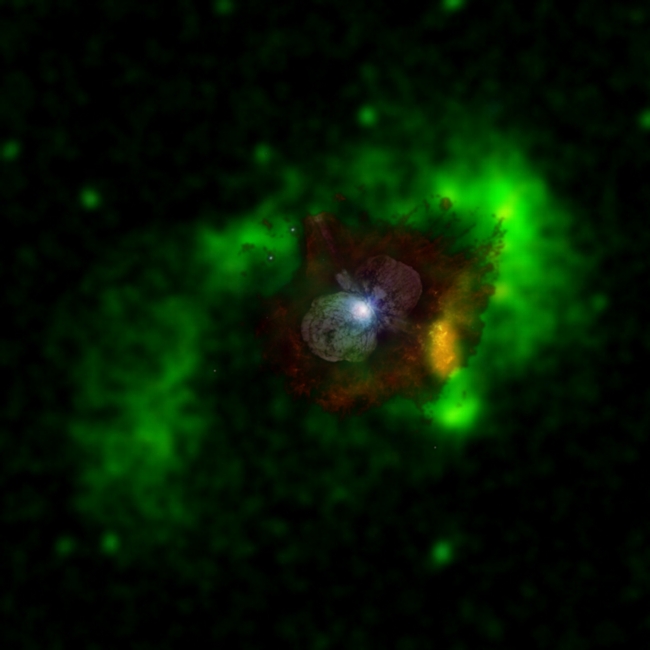Eta Carinae Research At GSFC
Extremely massive stars are key astronomical objects, as they play a role in chemical enrichment and galactic evolution. They mark the end of their stellar lives as supernovae explosions in which a single supernova can equal the entire radiant output of a galaxy of a billion stars. Recently the extreme members of this class have been suggested by Paczynski (1998) to produce the "hypernovae" which might explain the bursts of gamma radiation which have been an astronomical mystery for 30 years. The energy emitted in a "hypernova" is astounding; perhaps the equivalent to the radiant energy output of an entire universe of galaxies. Such extraordinary explosions require stellar precursors of unusually large mass, and so should be relatively rare. Alarmingly, the Milky Way possesses one possible member of this putative class, the massive, luminous, and relatively nearby star, Eta Carinae.η (eta) Carinae is both an extremely massive star and an extremely unstable one. It's notorious for erupting in the mid-19th century, and is surrounded by the ejecta from this eruption, which is visible both as cool optical nebulosity, and hot shocked X-ray emitting gas:

Recent Studies involving GSFC Scientists
Here are some links to recent studies of η Car which involve GSFC scientists (Ted Gull, Mike Corcoran, Krister Nielsen, Kenji Hamaguchi, Gladys Vieira Kober, Rosina Iping, Katya Verner, Fred Bruhweiler, George Sonneborn):
- The 2003.5 Observing Campaign: links to the HST Treasury Project, X-ray observations, along with important monitoring at IR, optical, millimeter, and radio wavelengths
- Monitoring Eta Car with the Rossi X-ray Timing Explorer
- Far-UV studies with FUSE: Evidence of the companion
Other η Car Links
- The η Car Treasury Project
- Augusto Damineli's η Carinae website
- Radio monitoring by Stephen White and co-workers
- Optical photometry from the La Plata Observatory
- η Car site at the American Association of Variable Star Observers
- MPIfR Infrared Interferometry Group (includes η Car observations and many other interesting sources)


